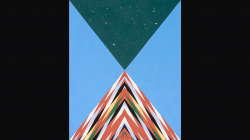In 1984-85 a young and eager group of new Dance faculty converged at U-M. They founded Ann Arbor Dance Works as a resident professional dance company of the University of Michigan Department of Dance in order to make, perform, and tour new work. For more than two decades, UMMA has collaborated with many of the same faculty to bring to life diverse projects that link choreography, movement, and the visual arts. This June 18 and 19, UMMA will host the 30th anniversary of Ann Arbor Dance Works. To mark the occasion, UMMA asked AADW Artistic Director, Jessica Fogel, and Thurnau Professor of Dance Peter Sparling, to talk about our history together.
JF: The first thing I did with the Museum was a commission by the Museum on the occasion of getting two new Picasso paintings in the early ‘90s. It was very much about finding a way into the paintings through embodiment and finding a response to them. It’s another way of entering into visual art for audiences, but also for choreographers. For myself, it becomes about a work of visual art as a score, just as music is a score.
PS: I think of visual art as arrested motion and dance as motion full of arrested moments. That kind of shaping of time or space into human body or forms is a direct correlation to when forms went up on the cave walls. I like to think that there is always that direct correspondence. My first experiences choreographing were about visualizing music. In 11th grade I would listen to the Bartok string quartets and I would imagine motion and I would draw pictures before I knew what choreography was. Of course, we in dance have a long tradition of working with artists whether it was Martha Graham and Isamu Noguchi or Merce Cunningham and Robert Rauschenberg.
JF: I did a lot of what I call visual art works. One was a dance highly influenced by Louise Nevelson. I created a series about Vermeer, a different series about Hopper paintings, and others, many here with UMMA.
PS: Students now don’t always come with an awareness of this tradition. It’s our task to get them over to the Museum where we can talk about our concurrent histories. The eras in dance—Impressionist, Post-Impressionist, Expressionist, Cubist, etcetera—correspond so closely to our Modern Art tradition.
JF: In the 30 years I’ve been here, my freshman composition classes almost always do a study at the Museum. The students are excited to have a different kind of reference. And their quick sketches are usually quite vivid even at this early stage. So right from the get-go they’ve got this idea that this is a way in, a way other way than their favorite three-minute song on their playlist. It’s kind of a change of psyche.
PS: When I worked with UMMA on the Mark diSuvero exhibition in 2011, students were dancing in relationship to Orion. They had to explore: How does movement reflect an object and resonate with something of such a monumental scale? About visuality, about striking the pose such that there is some relationship between that shape they’re making and that work of art, or not. It’s also helping stretch their imaginations in terms of what can inspire them to make work. You folks have been largely responsible for our being here too because your Education program has welcomed us in. I think it is a wonderful fit. It’s a way of alerting audiences who have perhaps been a little museum shy to see things in a new way.
JF: I think everything I’ve done at the Museum has been a real highlight for me. There’s a kind of resonance of the space. That’s one reason I wanted to have the Dance Works anniversary here. I envision moving through the different spaces with the audience in a more immersive role for the first part of the program and then settling into the Apse for the main event. And then, of course, we’ll end with cake!
AADW 30th Anniversary performances will take place on June 18 and 19 at 7:30pm. Cake to follow. Please visit www.umma.umich.edu for more information.

